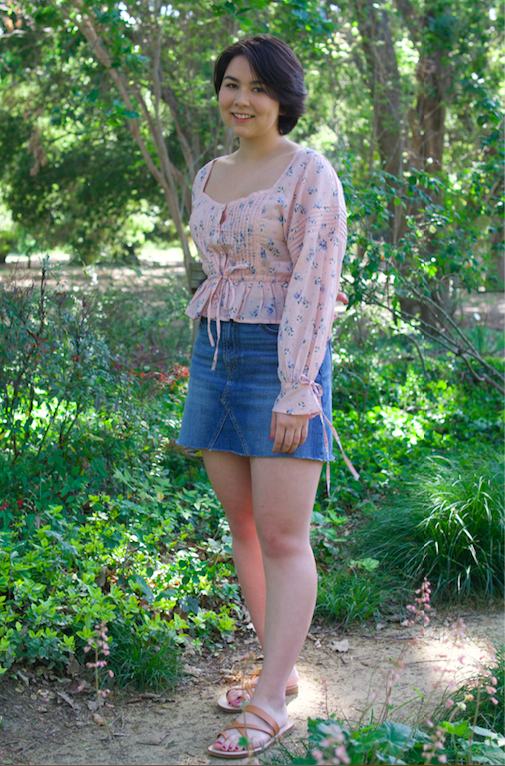Dear Montecito: Kristen Trent
It strikes me that our country has many euphemisms for bigotry. We can’t pull our eyes away from the screen – our media and its love affair with the transgressions of people my own age. I see others who are ready to excuse their “acting out,” reassuring the rest of us that they will “grow out of it” as if it were their taste in loud music or tendency to chew with their mouth open. I won’t criticize optimism. Let’s say it is a phase, that these kids will indeed grow out of it. Should we dismiss the harm they caused in their younger years?
I have no authority on this, having not experienced hate speech. But I see it in the world around me whether hidden in tomorrow’s headline or balanced with precarious irony as a confederate flag sticker on my high school classmate’s laptop. Today’s letter focuses on the effects of hate speech within our classrooms. This week’s piece was written by Kristin Trent, who has agreed to share her perspective on the American education system through the lens of a mixed-race identity.
As a final note, if you’re a person of color or know a person of color who wants to share their story, please consider writing to me at stellajane
pierce@gmail.com, so you can be featured in the column.
Dear Montecito,

Flying the nest is part of any good coming of age story. But, when departing from unparalleled Montecito, where is there to go? My journey took me inland to Davis, California, a college town where bicycles outnumber people. It is only now during my junior year at the University of California, Davis that I have stopped to reflect upon the town I used to call home. With Montecito as my very first blueprint of the “real world,” I often find myself looking back in awe on my early years and their accompanying perceptions of “normal.” This normal I perceived was the result of experiences like traveling with friends and getting lost in classmates’ estate homes.
When I arrived at Davis, the first thing I noticed was the variety of skin tones that filled the lecture halls. It was a relief for the first time to blend in given my multi-racial identity. During that first year, I met a number of people from Hawaii, some even from the same island and town where I spent summers visiting with my grandparents. From a young age living in fairly homogenous Montecito, my mixed identity separated me from my peers. Whether it was pronouncing words with a Hawaiian accent, or eating “unusual” foods, I was left feeling that I could not quite relate to and participate in the shared experiences of my peers. Merely reduced to the image of the Hawaiian girl, my elementary aged personality became centered around a geographic location, limiting my capacity to assume a new definition for myself. Upon moving to Davis, it has been rejuvenating to experience an environment thriving in diversity. This community was defined by its difference, and for that I was allowed the growth to defy the template placed before me and assume an identity to suit me.
Despite Santa Barbara’s prided beauty and resources, I have noticed the disconnect between our town’s praise in respect to its accompanying problems. In this manner, the implications of human problems permeate this paradise just as they do the rest of the country. In high school, I found myself in one of these unsightly cracks in the sidewalk. Unlike elementary school, it was no longer the social perception of my cultural background impacting my capacity for expansion, but something much larger than myself. It was hate speech. Proliferating its way through the halls and classrooms of high school, blatant discrimination remained seamlessly uncaught by teachers and administrators. The words, the slurs I overheard during passing periods loomed around me like wisps of smoke, not enough to set off a fire alarm. But they were always lingering, along the hallways, in the seats next to me, and caught, absorbed even, reverberating in the chambers of my mind. Lacking control to fight for the collective respect of my peers, I was driven to dread the unregulated jungle of high school. This reckless and persistent behavior drew me and my peers to become guarded, cynical, and hopeless. How were we supposed to dream big if we could not get to first period without overhearing conversations peppered with derogatory comments?
Now, I recognize that this crack growing in the sidewalk is metastasized deep past its superficial concrete appearance. Hate speech is human after all. We can see discrimination as magnifications of aggression built over the course of a life. Despite what we would like to think, these undesirable behaviors proliferate past graduation day. Even students holding top positions in the social hierarchy of high school are not immune from this behavior. This toxic paradigm young adults are forced to endure is a disservice to the fundamentals of growth and well-being. Teachers and administrators should not put their blind faith in the idea that kids will “grow out of it.” I am here to say that social issues resulting from discriminatory behavior go against that very notion. These issues do not go away, in fact they magnify until those aggressions learned by high schoolers, are then perpetuated by CEOs and politicians years down the line.
I have hope for future young adults and for the change of the systemic error that allows hate speech to persist without consequence. Montecito, I write to you for recognition, that our community, despite our privilege, suffers from this undercurrent of discriminatory behavior. Let us harness this resounding privilege to eliminate the systemic sources allowing such behaviors to exist. If not us, then who?
With hope,
Kristin Trent







